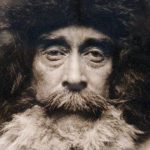I remember when the Arctic was Canada’s Amazon, a romantic, forbidding land. School textbooks depicted it as a pink space on the Canadian map with small dots of habitation, “Fort This” and “Fort That.” These were often Hudson Bay posts with a population of three.
It was said the Soviets had better maps of the region than we did. And Americans had built airbases in Alaska and Greenland. Canada was in between, with a tenuous foothold on the Arctic islands, and officials grew nervous about who owned what. It was the old story of the north, use it or lose it.
So in 1953 as a young scientist with the Geological Survey of Canada I joined what was an extraordinary journey. We would map the Arctic.
Planning took a year. We had to cache fuel supplies and wrap ourselves in heavy padded clothing the army developed for Arctic use. In the spring of 1953 we left aboard a supply ship out of Quebec City, steaming up the Labrador Coast to Baffin Island at eight knots.
On landing we headed for Ellesmere Island. My colleague was Geoffrey Hattersley-Smith, an English glaciologist who’d been a member of the British Antarctic Survey in 1950. We traveled by dog teams we’d hired from Inuit in Greenland equipped with tents and dehydrated foods, and little portable stoves. It felt like an expedition.
The north coast of Ellesmere Island is in the lee of the wind and the snow was deep and heavy. Hattersley-Smith was a gung-ho character who seemed to enjoy it. If you felt tired, tough. Grit your teeth and get on with it. I was in my 20s. It was an adventure.
I recall the day we found Arctic explorer Robert Peary’s flag.
Peary’s wife had given him a handmade flag to carry on his last expedition in 1906 when he claimed to discover the North Pole. Peary died in 1920 but left a written account of the map’s location in a cairn at Cape Columbia overlooking the Arctic Ocean.
The day we spotted the cairn, Hattersley-Smith proposed we follow a tradition of British fair play. We would walk towards our find hand-in-hand so neither of us could later say, “I was first to discover Peary’s flag.”
Hidden in the cairn was a rusted tin with a perfectly preserved remnant of the flag the size of a handkerchief. Later we gave it to Peary’s widow.
Hattersley-Smith and I made other finds that year. We found tins of fruitcake from an 1875 British expedition, and letters addressed to Amundsen left behind by a Danish team in 1920.
And we began the work of mapping the Canadian Arctic. It was a mammoth task that took years to complete, over hundreds of thousands of square miles.
In the end, we planted our own Canadian flag, and established that we – no less than Americans or Russians – had a stake in the Arctic.
Hattersley-Smith passed away in 2012 in England. Peary’s flag is now preserved by the National Geographic Society in Washington, D.C. And I retired to Ottawa and marvel when I see ads in the travel pages for Arctic travel by cruise line.
(Editor’s note: the author was an acclaimed geologist and member of the Geological Survey team that first mapped the Canadian Arctic. Dr. Blackadar died in 2017. His commentary was originally published May 2, 2013)






